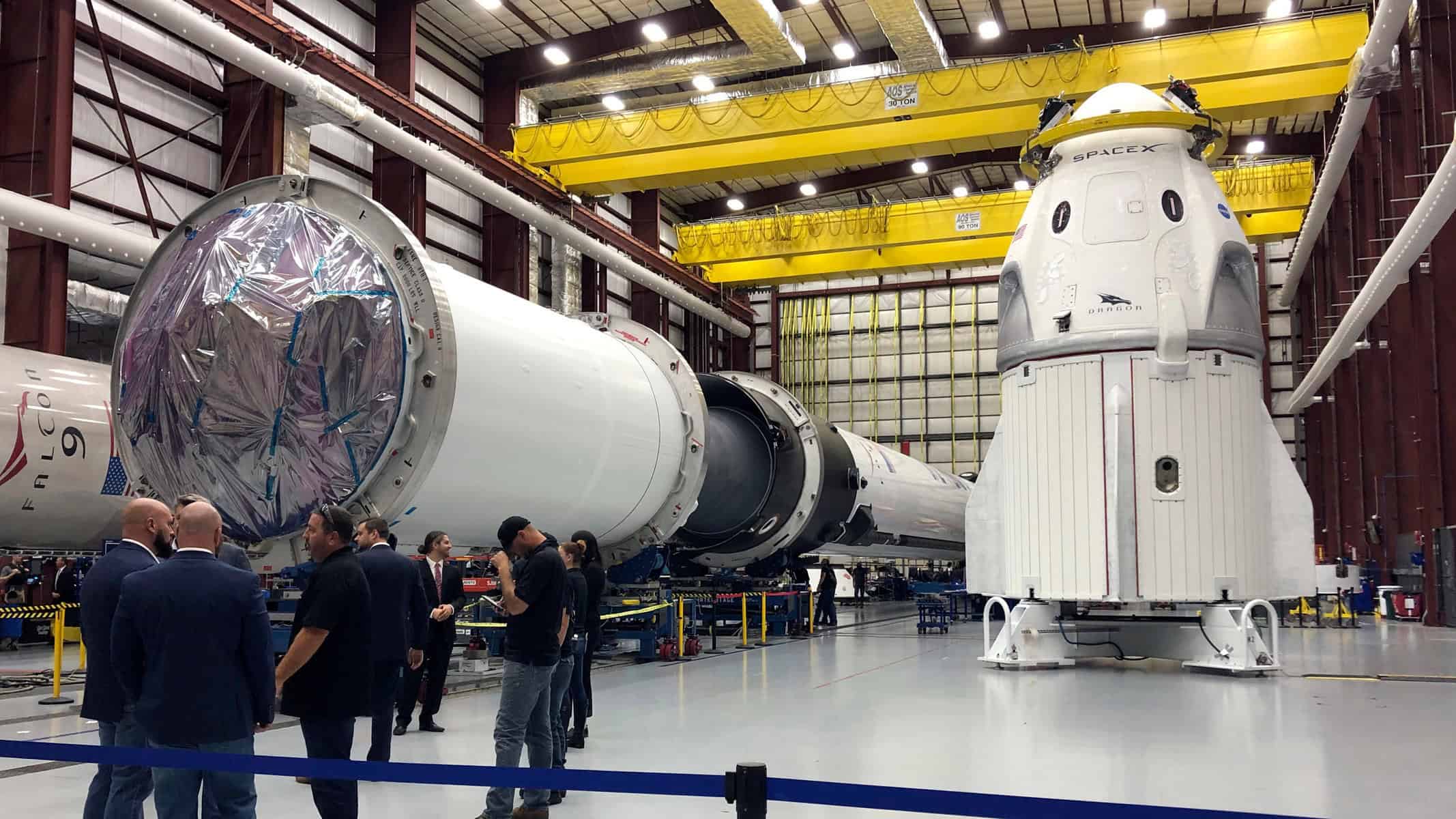
NASA has given the green light for Elon Musk’s SpaceX to launch the first unmanned test of its seven-seat Crew Dragon capsule on March 2 after passing a full day of reviews, bringing the space agency one step closer to replacing the retired Space Shuttle program after years of delays and ending its dependency on contracted Russian Soyuz rockets.
The test flight was originally scheduled for January, but was later delayed to complete hardware testing and other reviews. Per Space.com, NASA and SpaceX officials have now completed an in-depth review of the Crew Dragon’s capabilities called a flight readiness review, with NASA Commercial Crew Program manager Kathy Leuders telling reporters they needed to verify the craft “can safely go rendezvous and dock with the space station, and undock safely, and not pose a hazard to the International Space Station.”
The flight date, aboard a SpaceX Falcon 9 rocket, is scheduled for 2:48 a.m. ET on March 2, at NASA’s Florida-based Kennedy Space Center—with backup dates of March 5, 8, or 9 if the mission is delayed due to technical problems or poor conditions on the day of the launch. That puts SpaceX well ahead of competitor Boeing, whose CST-100 Starliner isn’t scheduled for its first uncrewed test date until April. That month, SpaceX is planning tests of the Crew Dragon’s emergency abort system, which uses SuperDraco engines to propel the capsule away from danger in the event of an emergency. If all goes according to plan, which is far from guaranteed, Crew Dragon will be slated for a manned mission in July, according to Space.com.
During this initial test, according to the Verge, the Crew Dragon will remain in orbit until early on March 3, when it will attempt to dock with the International Space Station. After a week there, it will splash down in the Atlantic Ocean off Florida coastline.
Russian space agency Roscosmos had expressed some concern about the safety of SpaceX’s software, the Verge added, but associate administrator for NASA Human Exploration and Operations Bill Gerstenmaier told reporters, “I don’t think it’ll be a problem once we go through the details of why it’s safe, and we can explain to them the details of why we’re moving forward.”
Space.com reported that the flight readiness review revealed a few minor problems with “with various Crew Dragon systems, including its thrusters and parachute,” but that NASA officials said they expected all problems to be resolved by the launch date.
“I fully expect we’re going to learn something on this flight,” Gerstenmaier said, according to Agence France-Presse. “I guarantee that everything will not work exactly right, and that’s cool—that’s exactly what we want to do… We want to maximize our learning so when… we’re ready to go do a real crewed mission, and it’ll be the right safety for our crews.”
This isn’t the only big development from SpaceX as of late: Musk tweeted this week that it will use one of its Falcon 9 first stages for a record-setting fourth time during the emergency abort test, though he expected a “high probability” of the test resulting in its destruction.

